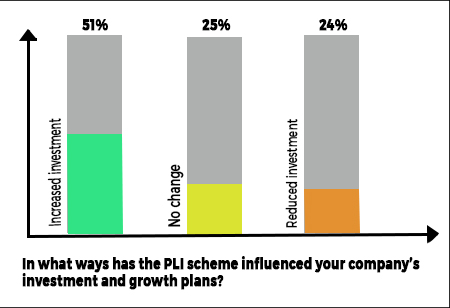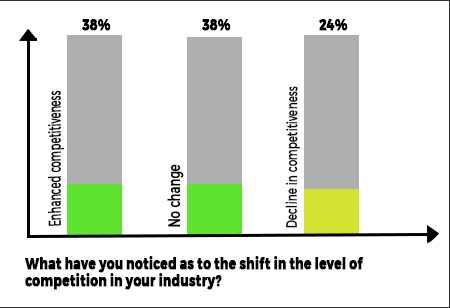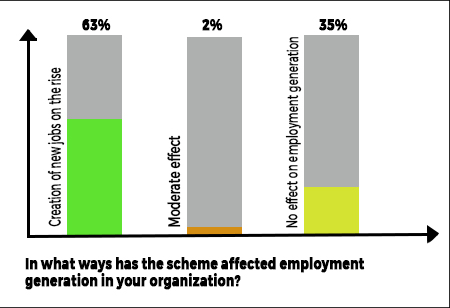
The latest survey carried out by Industry Outlook magazine has been a resounding success, garnering response from 683 professionals from the industry. The research was undertaken systematically to evaluate the effectiveness of the Production Linked Incentive (PLI) scheme on India’s manufacturing sector.
The survey was designed to understand investment trends, market environment, and employment creation to gain insights that would influence policymaking, build a healthy industrial environment and help organizations make strategic choices. Based on the responses received, this report explains the findings of the survey and offers insight into the impact of PLI scheme on the manufacturing sector.
The survey was conducted with a cross-section of industry professionals from Indian manufacturing organizations such as CEOs, COOs, CFOs, CHROs, plant managers, production heads, R&D directors and supply chain heads. This broad participation made it possible to capture the views of a diverse group of professionals and hence the results were inclusive.
The survey generated valuable information concerning the effect of the PLI scheme on investment and growth strategies in manufacturing industries.

Increased Investment: As many as 51 percent of the respondents said the PLI scheme has boosted investment in their organizations. This shows evidently that the scheme has been able to encourage companies to direct more efforts in increasing their capacity as well as production. The enhanced investment could be attributed to the encouraging incentive structures that are implemented under the PLI scheme for the industrial sector development.
No Change: 25 percent respondents said that there has been no change in investment plan due to the PLI scheme. This group may consist of firms that were already investing at the right level or those that did not consider the scheme as a major factor that determines their investments.
Reduced Investment: 24 percent of the respondents pointed to reduced investment due to the PLI scheme. This could be due to several factors including firms reviewing their investment plans or encountering barriers which have forced them to reduce their investment plans. It is necessary to explore the reasons for the reduction with a view of identifying the possible causes for such decline.
The survey also sought to find out the impact of the PLI scheme on the level of competition in the industry.

Enhanced Competition: The results showed that 38 percent of the respondents noticed a rise in competitiveness of their industry. Competition may have been intensified by the PLI scheme since expanding the market share and increasing the quality of the products mean that the company has to produce higher-quality products than its competitors. Increased competitiveness results in innovations of existing products, which are advantageous to the consumers as well as the growth of the industry.
No Change: 38 percent of the respondents affirmed that there has been no change in the level of competition in their industry. This implies that, to some of these companies, the effect of the PLI scheme may have been negligible regarding the competitive landscape. This perception might be due to factors such as market saturation or the existing competitive environment.
Decline in Competition: 24 percent of respondents reported that the competitiveness had reduced. This decline may be as a result of market saturation and the possibility of reduced competition from other players in the market. It may also be taken to mean that some firms are coping with the shift in dynamics occasioned by the PLI scheme and this has resulted in a reduction in competitive rivalry for a while.
The creation of employment is always a core issue in any industrial policy and the survey attempted to measure the effect of the PLI scheme on it.

Creation of New Jobs on the Rise: 63 percent of the participants in the survey claimed that the PLI scheme has resulted into creation of jobs in their organizations. This shows that the scheme has had a beneficial impact on the generation of employment and economic development. The increase in job creation is in line with the scheme’s goal of increasing the manufacturing capacity and industrial growth.
Moderate Effect: A moderate effect on employment generation was noted by only 2 percent of the respondents. This means that for a small percentage of firms, the PLI scheme has not led to creation of as many jobs as expected. These companies can be in sectors which are not considerably impacted by the scheme’s incentives in terms of employment.
No Effect on Employment Generation: New job creation is also not visible and 35 percent of respondents said that PLI scheme has not made any impact in employment. This group may include industries that are not much affected by job creation aspect of the scheme or industries that do not find the incentives attractive enough.
Also Read: Industry Outlook CSR Survey Report Released: Priorities, Performance, and Challenges in CSR
The findings from the survey offer a big picture of how the PLI scheme has served the manufacturing industry in India so far. The scheme seems to have affected investment behavior in a big way with most organizations stating that they have invested more and have created more jobs. It has had an impact on competitiveness to the extent that a significant number of the respondents’ competitiveness has improved, while others have experienced no change or a decline in competitiveness. Nevertheless, it is observed that the scheme’s impact differs between companies and industries, which implies that future research will be required to unravel more particular issues and benefits.
We use cookies to ensure you get the best experience on our website. Read more...